
Immersed in the great expanses of the Pacific Ocean, the archipelago nation of Vanuatu is a fascinating mosaic of islands, one of which is Tanna Island, serving as the perfect getaway for intrepid and thrill-seeking travelers. While the perpetually erupting volcano of Mt Yasur is by far its most prominent highlight, Tanna is also culturally rich, home to several Melanesian tribes who still follow ancient customs and lifestyle, making the Island both a magnet for adventurous hikers and an authentic speck of land, where one can experience the Vanuatuan tribal culture at its fullest glory.
Intrigued by the volcanic smog of Mt. Yasur, the historically renowned explorer James Cook became in the late 18th century the first European to ever visit Vanuatu. The British navigator named the Island “Tanna”, most certainly inspired by the word “Tana” in the local Kwamera language, literally meaning earth.
The Vanuatuan archipelago is extremely large and dispersed, consisting of 83 islands varying in shape and size, while Tanna ranks as the sixth largest island, roughly 19km wide and 40km long, and extensively covered by rainforests and mountains, giving the island its wild character.
Among the island’s thirty thousand inhabitants, two thirds live in remote and hard-to-reach places, hardly visited by any foreigners. Isolated from much of the world, most of Tanna’s islanders strictly observe and keep their traditional way of life, best reflected in the rural communities known as “Kastom Villages”, where local residents willingly decided to avoid any contact with the modern world, totally refraining from the use of technology.

Yasur Volcano erupting during daylight (a view from the Ash Plain), and walking through the rainforest in Tanna
photography by: Mika - Exploring Paw
The easiest way to reach Tanna is by a plane from the capital city of Port Vila, the entrance point of most international travelers. The flight takes about 40 minutes and bounds for White Grass Airport on the island’s west coast.
The national carrier, Air Vanuatu, operates regular flights to Tanna, while other private methods of transportation are either too expensive or lengthy, for instance, a boat journey will take between 12 to 15 hours and might be bumpy due to weather conditions.
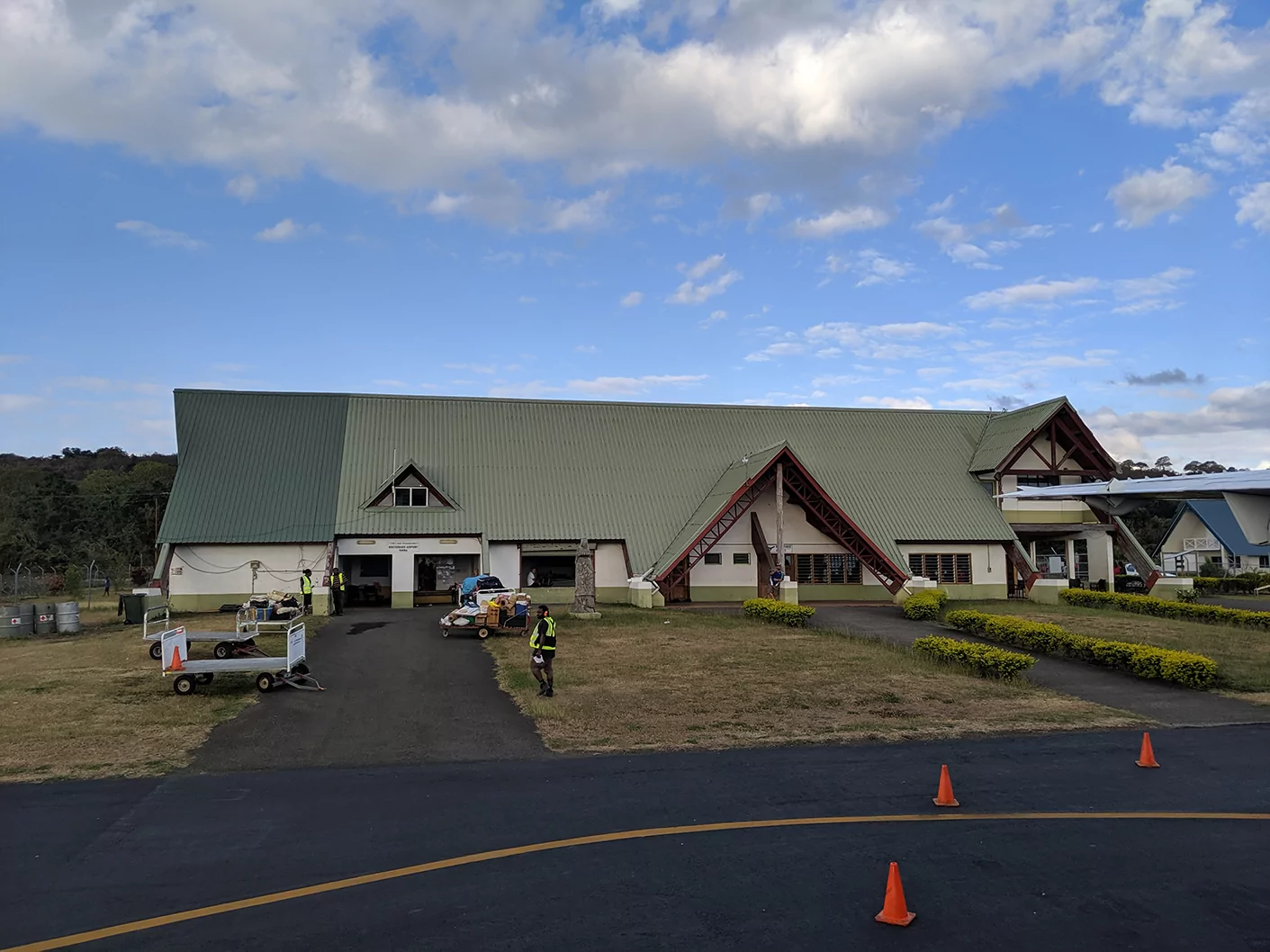
White Grass Airport, Tanna
photography by: Mika - Exploring Paw
Unfortunately, no car rental is available on Tanna, thus the only viable way of getting around the island independently is by hiring a local driver, preferably booked in advance prior to arrival.
Tanna’s airport is exceedingly small, comprised of only two rooms, one for departures and the second one for arrivals. Upon landing, the airport staff will pick your bags to be later collected from a bench at the arrivals section, that’s when you realize the sheer authenticity that awaits you.

Roads going through a jungle in Tanna
photography by: Mika - Exploring Paw
There are two main types of lodging experiences in Tanna, one of which is staying in one of the resorts around the airport, where a large degree of comfort and numerous amenities are guaranteed. Among the most popular resorts are Evergreen Resort and the White Grass Resort, both of which organize tailor made tours across the island, which can be a very convenient way to explore Tanna.
Another option is to fully embrace the Island’s wilderness by staying in one of the villages, experiencing the rural lifestyle in an unrestrained manner, and while this alternative approach is pretty rustic in nature, it makes your trip far more interesting and adventurous. The best way to find this type of accommodation is by visiting the official website of Tanna and book through there.
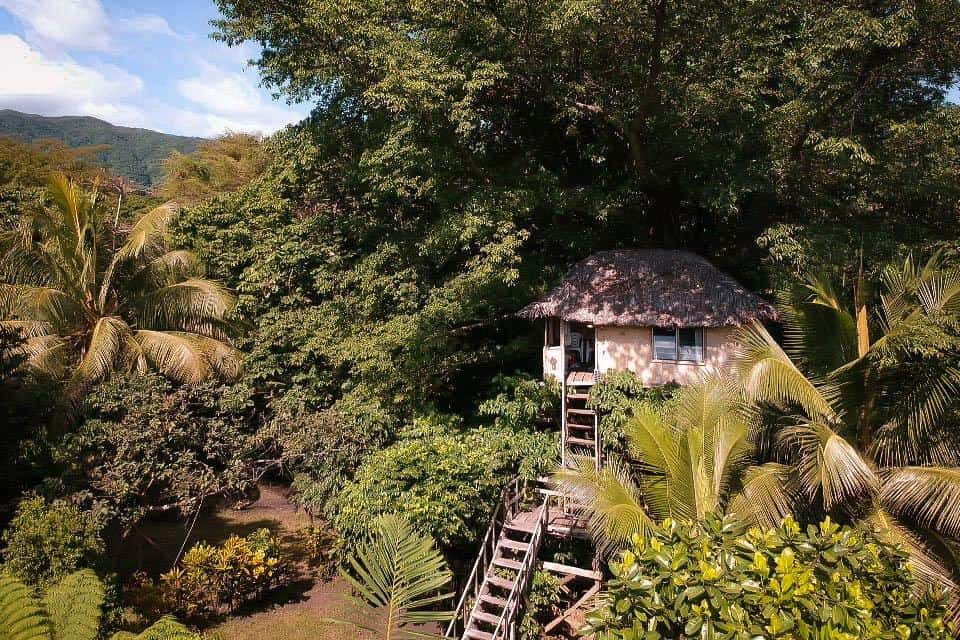
Tree house in the IMAIO Village
photography by: Mika - Exploring Paw
Besides Tanna official travel website, most accommodations options are available elsewhere like Airbnb or Booking. Perhaps one of the most fascinating places to stay is the tree house in IMAIO Village, bestowed with views of Mt. Yasur Volcano, while offering an incredibly authentic experience.
Another secluded rural accommodation is the remote village of Daniel and Rachel, also the owners of the Blue Cave, one of Tanna’s main attractions, for bookings, they can be reached out via their Facebook page.
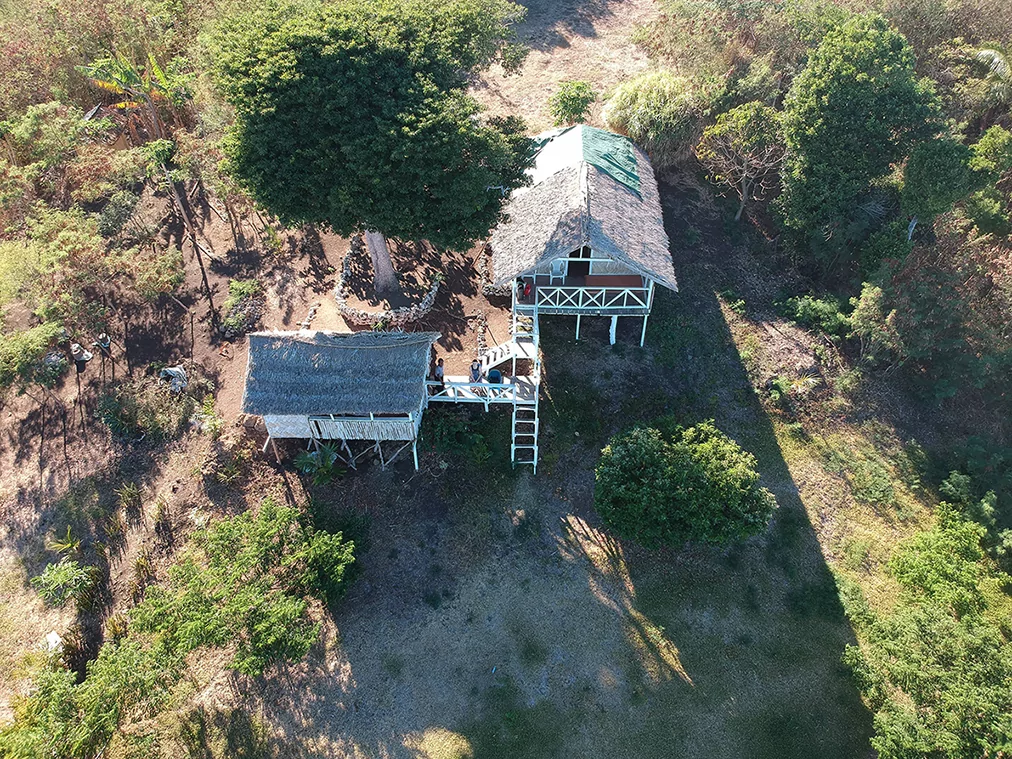
Bungalows on top of the cliff adjacent to the Blue Cave
photography by: Mika - Exploring Paw
Globally renowned for being the most accessible active volcano in the world, Mt. Yasur is incredibly formidable, relentlessly spewing lava and smog. Accessible solely with a licensed guide as part of a group, the volcano can be climbed at different hours throughout the day, yet the most recommend time is during sunset.
While Mt. Yasur’s ongoing eruptions are magnificent sight all day long, during nighttime it gets even more stunning, when the lava’s reddish hues are being contrasted and highlighted by the darkness.
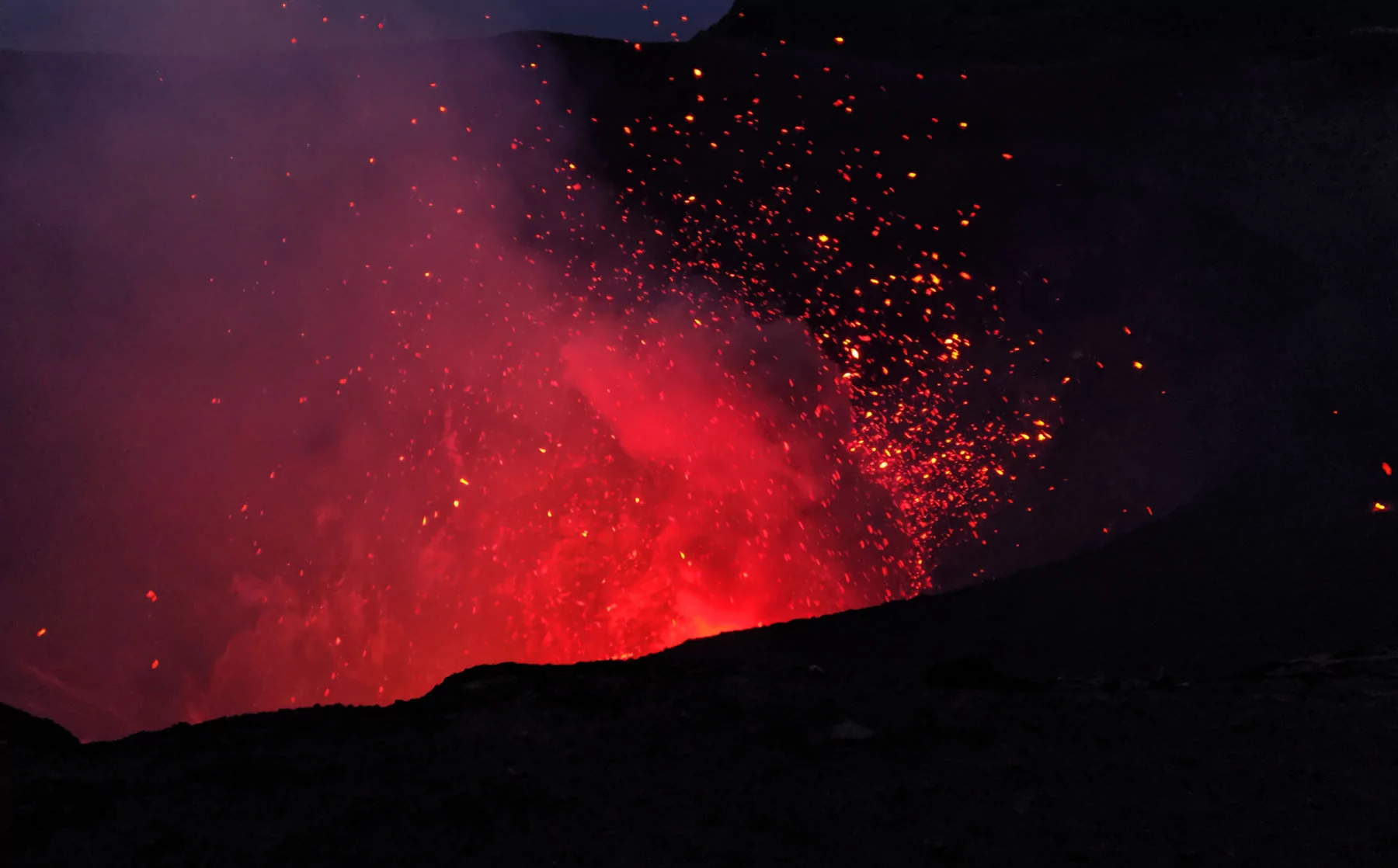
Lava eruption during nighttime on top of Mt. Yasur
photography by: Mika - Exploring Paw
The journey to the mountain itself usually starts with a short briefing about its history, followed by a performance of local tribesmen wearing traditional garments, interestingly, in the past those dances were considered as a way to ask the spirits for a permission to ascend the summit.
Shortly after the cultural show, a 4X4 vehicle takes the travelers to one of the volcano’s mountainside, and from there directly to the peak, where you walk along the rim and marvel at the striking spectacle of raging lava at its greatness, engulfing the two volcanic craters.
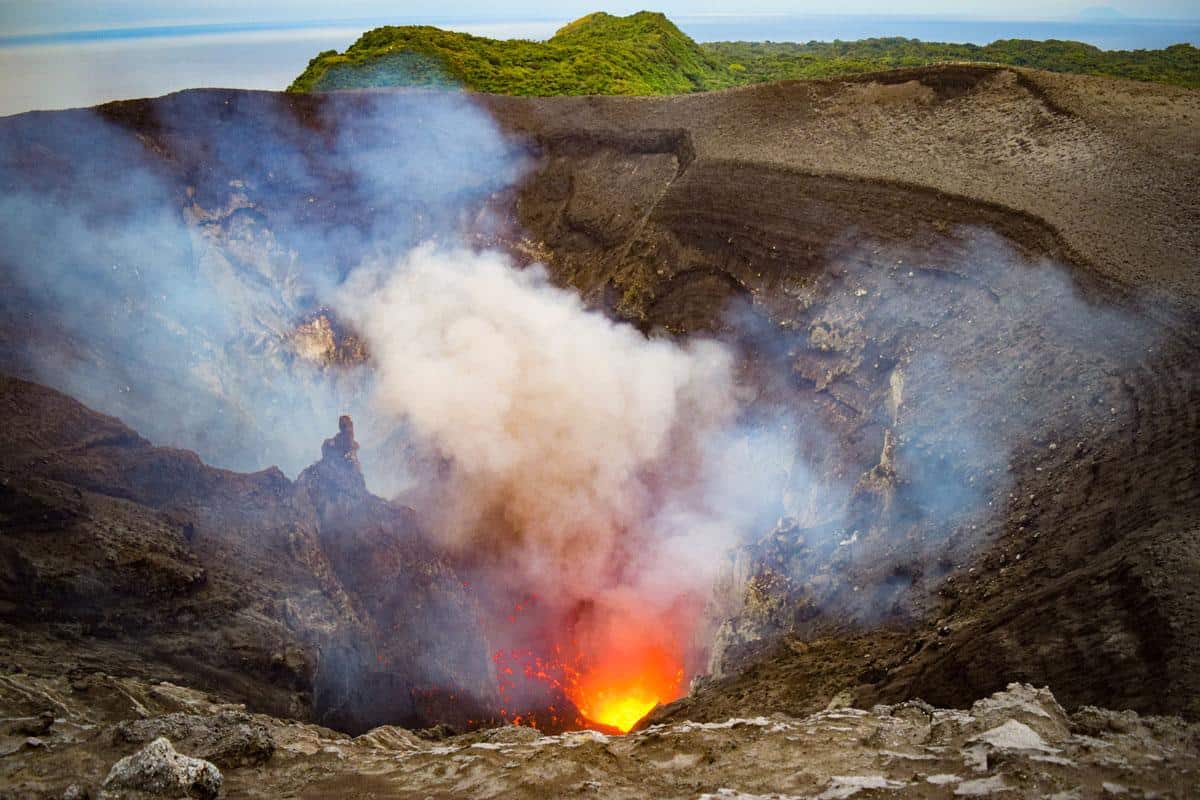
The main crater of Yasur Volcano
photography by: Mika - Exploring Paw
Take note that there aren’t any fences or barriers, while occasional strong air currents of smog will most probably come your way, making the experience not ideal for the faint hearted, yet whatever unpleasant moments occur along the journey, it’s undoubtedly worth it, as the bubbling molten lava being ejected high into the air is a once in a lifetime scenery to awe at.

Traditional dance performed by locals
photography by: Mika - Exploring Paw
Surrounding the volcano from all sides is an expansive terrain covered by volcanic ashes, totally deserted and lifeless, simply known as the Ash Plain. The place is somewhat out of this world, with few or any visually similar sites worldwide, providing a truly exceptional experience in all sense of the word.
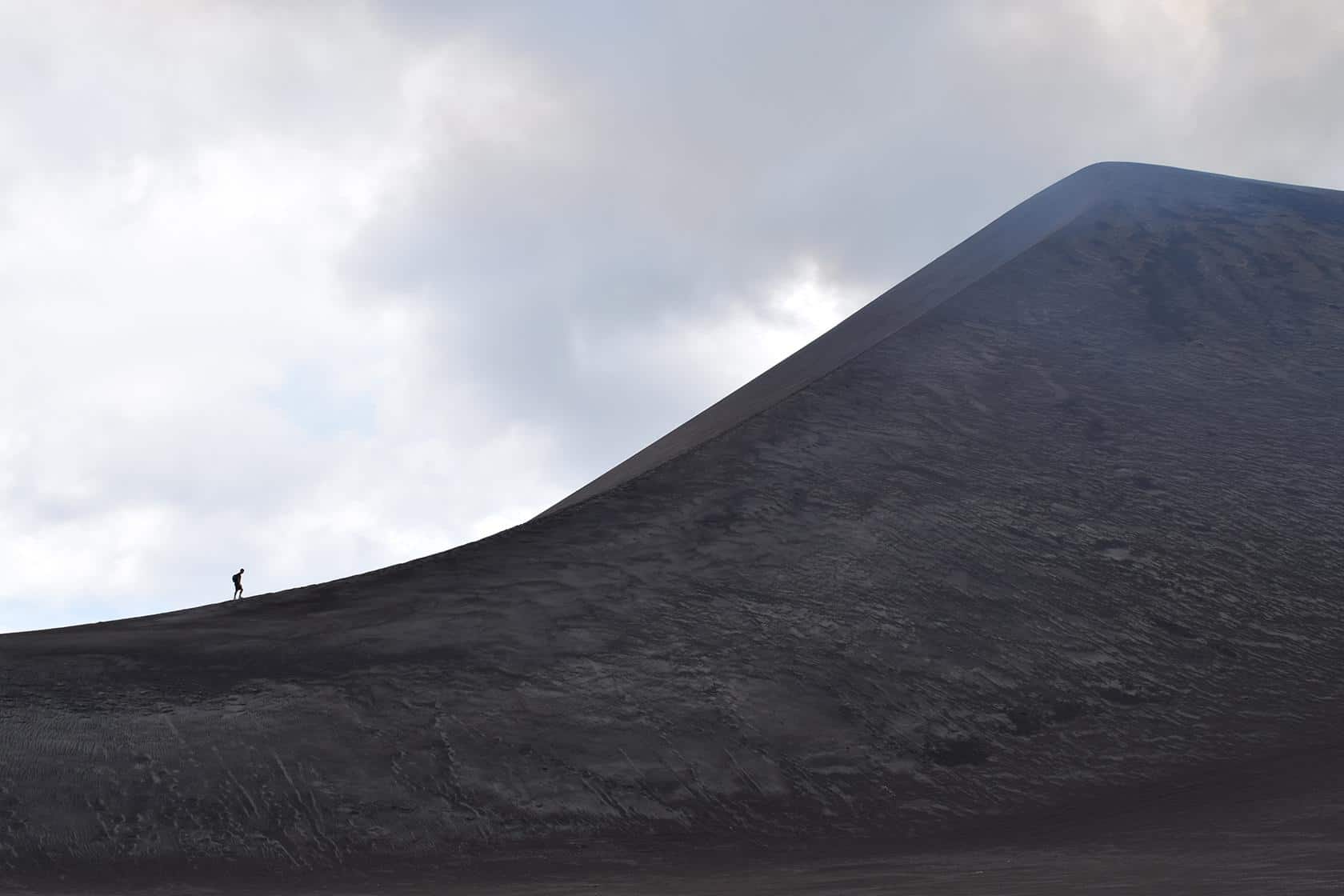
Hiking on the mountainside of Yasur Volcano
photography by: Mika - Exploring Paw
Most organized tours allocate few minutes for some photos, right before reaching the park entrance and Yasur Volcano’s ascent, while I on the other hand strongly recommend to wander around for at least a couple of hours if you aren’t too tight with time, as the experience is much more appreciated when you actually spend a longer period of time over there.
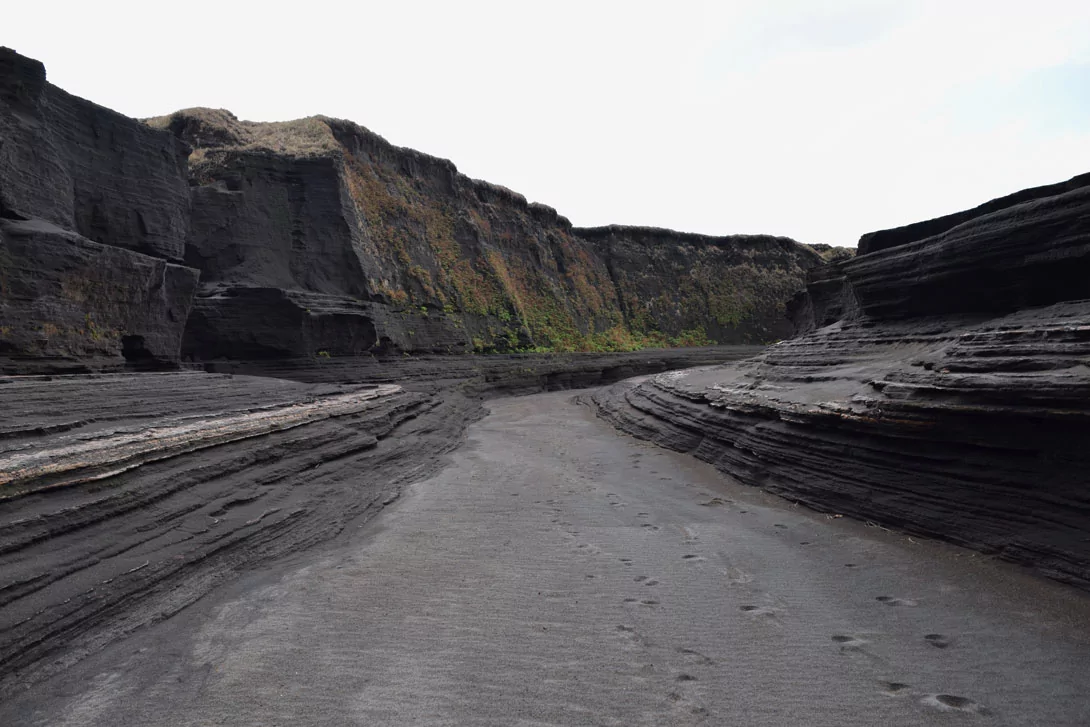
The canyon of the Ash Plain
photography by: Mika - Exploring Paw
While hiking across the ash plain, the constant eruptions of Mt. Yasur never stop rumbling in the background, fully resonating with the volcanic apocalyptic landscape.
One of the ash plain’s best highlights is the river running along a creek at the base of the volcano, when during the dry season it’s possible to walk on its bed and follow its path for an even more intriguing adventure.
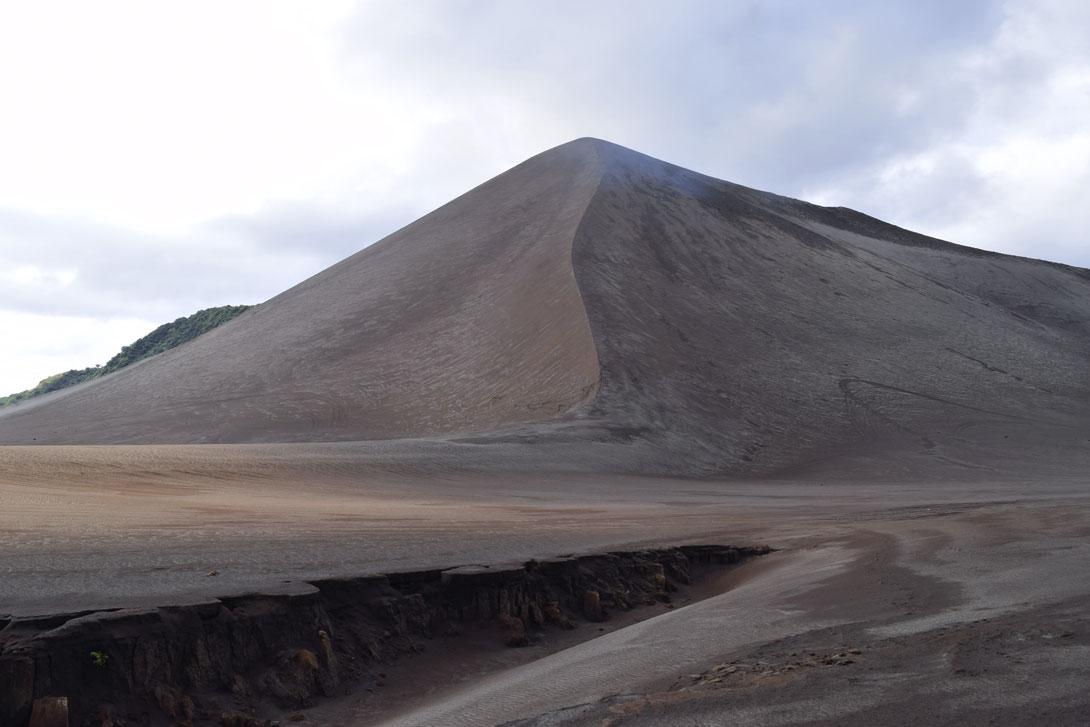
View of Mt Yasur from the Ash Plain
photography by: Mika - Exploring Paw
Located on the northwestern part of Tanna Island, the Blue Cave is a pristine natural gem that simply can’t be skipped.
The site is mostly reachable by a short boat trip from Lenakel, the island’s main village, or any resort as well. Alternatively, it is possible to ask your driver to take you there by a car, yet it’s not recommended due the road’s bumpy conditions and lengthier trip duration.
Entirely scooped out of a cliff, the Blue Cave is an underwater grotto accessible solely by swimming. During high tide, you have to swim your way underwater in order to enter the cave, while at low-tide, it’s far easier to crawl through a small opening beneath the cave walls without actually holding your breath.
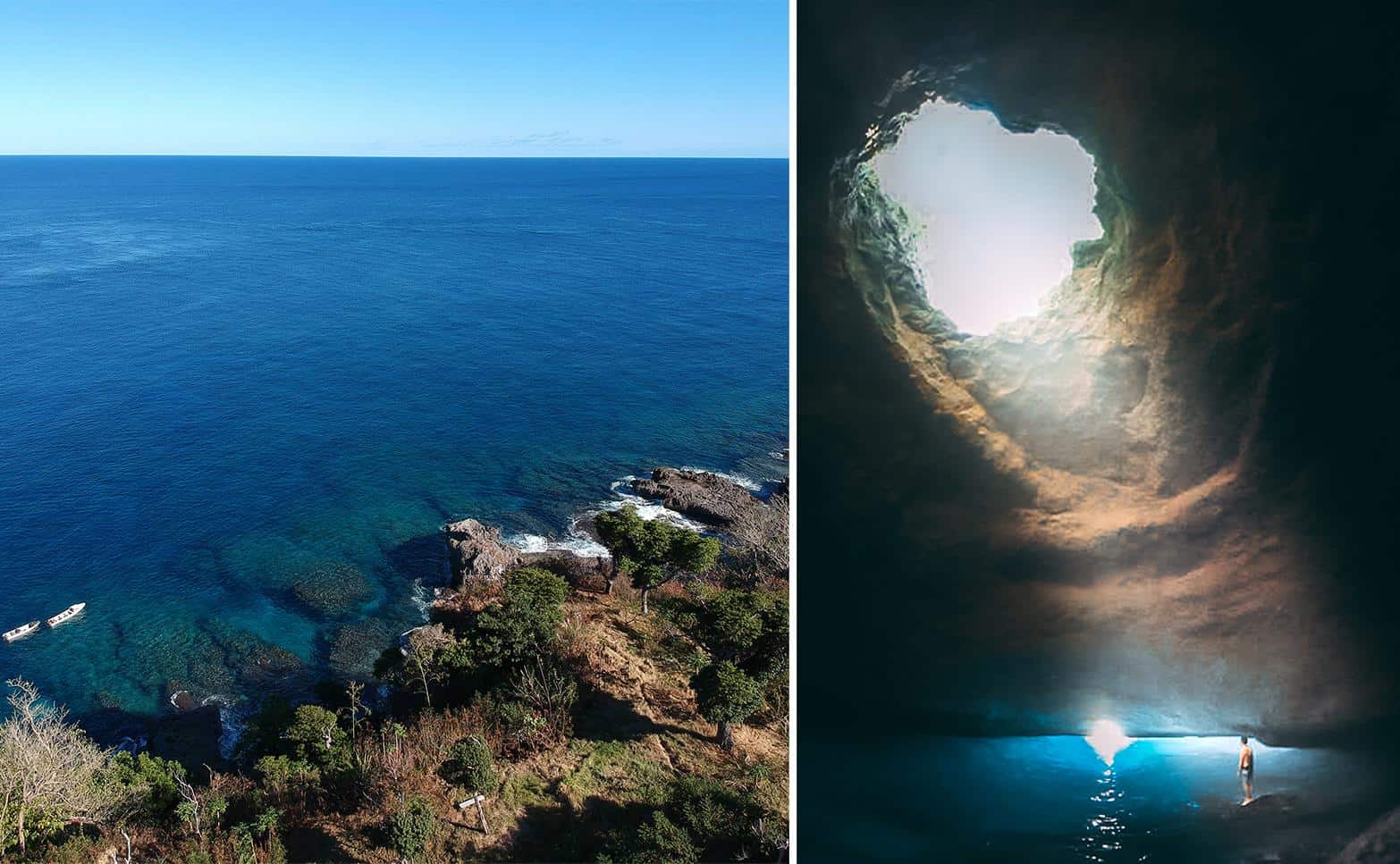
Around and inside the Blue Cave
photography by: Mika - Exploring Paw
Once inside, it’s truly breathtaking, especially since the cave is illuminated by a natural skylight on its top, whose reflection on the water surface colors it with a superb turquoise hue. The cave’s banks are relatively dry, making them ideal to climb on for a different and wider perspective.
Outside the cave, the thrill seekers among you might want to jump from the top of the cliff directly into the ocean, as there are plenty of spots where it’s safe to do so, the highest of which is 10 meter tall.
If you want to further intensify the experience, it’s possible to book a night at the small village which perches on the edge of the bluff, over the Blue Cave, where you’ll have your local style dinner prepared for you by Daniel and his wife Rachel, the owners of the premises.

Traditional meal prepared at the Blue Cave
photography by: Mika - Exploring Paw
The Vanuatuan archipelago is home to one of our planet’s most bizarre plants, the giant Banyan tree, distinguishable not by its height, which rarely exceeds 30 meters, but by the sheer area it can cover, the largest of which encompasses a staggering surface area of almost 19,000 square meters.
It might come as a surprise, but botanically, banyan trees are actually not considered as trees at all.
It all starts when a bird, while eating a fig, drops a few seeds into the tree in which it is perching on. The seed then germinates in the hollow of a trunk, spreading its roots towards the ground. The more its roots grow, the more likely they are to suffocate the original tree. Within a few decades, the banyan roots and branches will take over, while the tree in which the aggressive plant resides in will eventually die.
As you come closer around a banyan tree, you might mistake it with several trees that have merged with each other, yet these are multiple roots and branches belonging to the same plant.
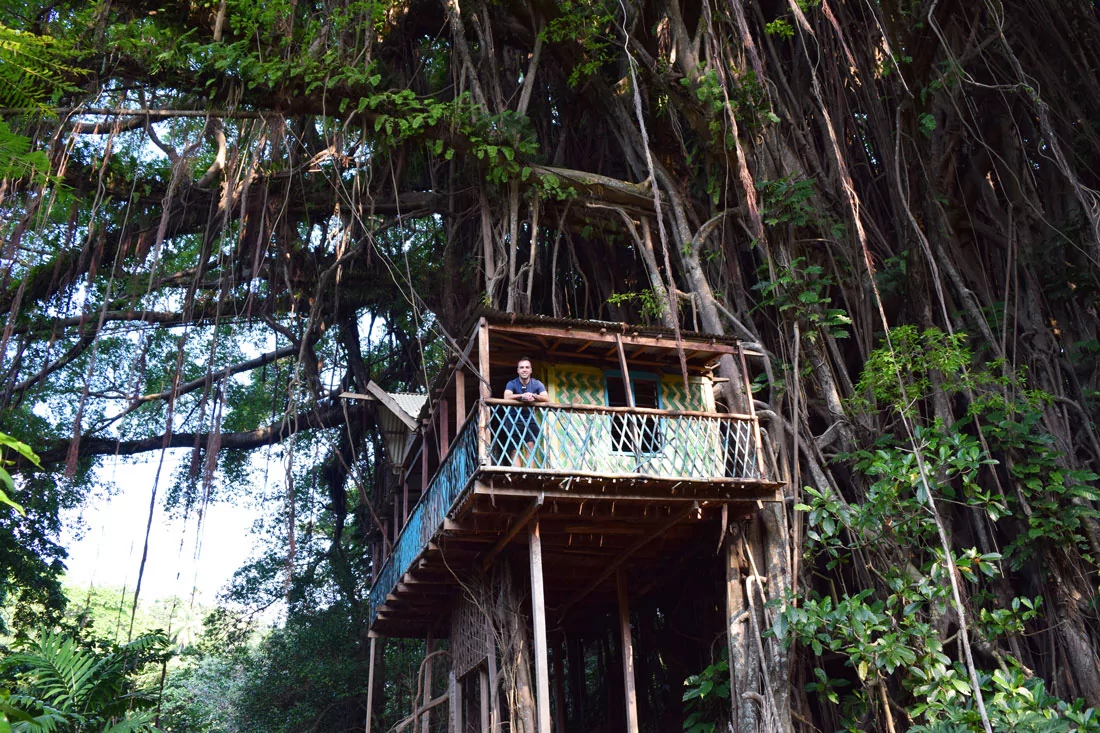
A giant banyan tree encroaching an abandoned tree house in the jungle of Tanna
photography by: Mika - Exploring Paw
Deemed as a childhood dream for many of us, sleeping in a tree top house is one of Tanna’s most exceptional experiences, particularly when the cabin is situated on a tree overlooking a dense jungle and an erupting volcano.
While different options are available, a local village at the foot of Mt Yasur named Imaio is especially recommended. From the airport, it takes approximately two hours by car to travel the 40km of dirt roads through a thick jungle in the middle of the island, a rough and bumpy adventure yet also a remarkable experience by its own right.
Completely constructed by the owner, a member of the village, the cabin is rather basic but charming, blessed with absolutely magical views from its terrace, dominated a thick rainforest with a distant backdrop of Yasur volcano. As night falls, the spectacular reddish eruptions of lava are clearly visible in the night-sky.
Interestingly, the lavatory was built in the empty space between the branches of the tree that constructively supports the bungalow, providing a remarkably interesting experience for such a mundane activity that all of us rarely pay attention while doing so.

The Top Tree House accommodation in the IMAIO village and the bathroom within the banyan tree, holding the treetop house
photography by: Mika - Exploring Paw
Port Resolution
Named after James Cook’s HMS Resolution which landed at this coastal stretch of land back in 1774, Port Resolution is nestled in a charming and relatively wide bay at the southeastern side of the Island, where you’ll have to first cross the village of Port Resolution in order to get to the beach itself.
On a sunny day, it is undoubtedly the perfect place to spend a few hours dipping in the Pacific Ocean, while watching the local fishermen catching their next dinner.
The large hut at the beachfront serves as a restaurant, owned by the village, and whose menu is relatively famous island-wide for its scrumptious bites.

Port Resolution’s main beach
photography by: Mika - Exploring Paw
Black Sand Beach
A few kilometers away from Port Resolution is another stunning natural wonder, a secluded black sand beach, where the contrast between the ocean’s azure blue color and the charcoal black hues of the sand is outstanding.
Curiously, at one edge of the beach lies a hot spring, gushing out of the sand and flowing right into the ocean, and if you get lucky enough you can watch local islanders using the almost boiling waters to cook taro and cassava.

The black sand beach near Port Resolution
photography by: Mika - Exploring Paw
Shark Bay
A little further south of Port Resolution, Shark Bay is actually a small promontory, where on sunny days, it’s possible to watch sharks swimming below in the bay’s shallow waters, whereas during hazy weather conditions, it becomes less ideal.
Some people would find it a bit tricky to spot the sharks, in that case, the hospitable villagers from the nearby rural community will be happy to help, so don’t be shy.
Take note that entering Shark Bay entails a fee of 1,000 Vatu (roughly 10 dollars).
Sulfur Bay
Sulfur Bay is also located on the island’s east coast, not far from some of the aforementioned places. Yet another strip of black sand beach, Sulfur Bay, is just a few kilometers away from the Mt.Yasur official entrance, featuring a charming hot spring that flows directly into the bay, where local children enthusiastically swim, always friendly and curious towards foreigners.
Like Shark Bay, visitors must pay a small entrance fee in order to enter.
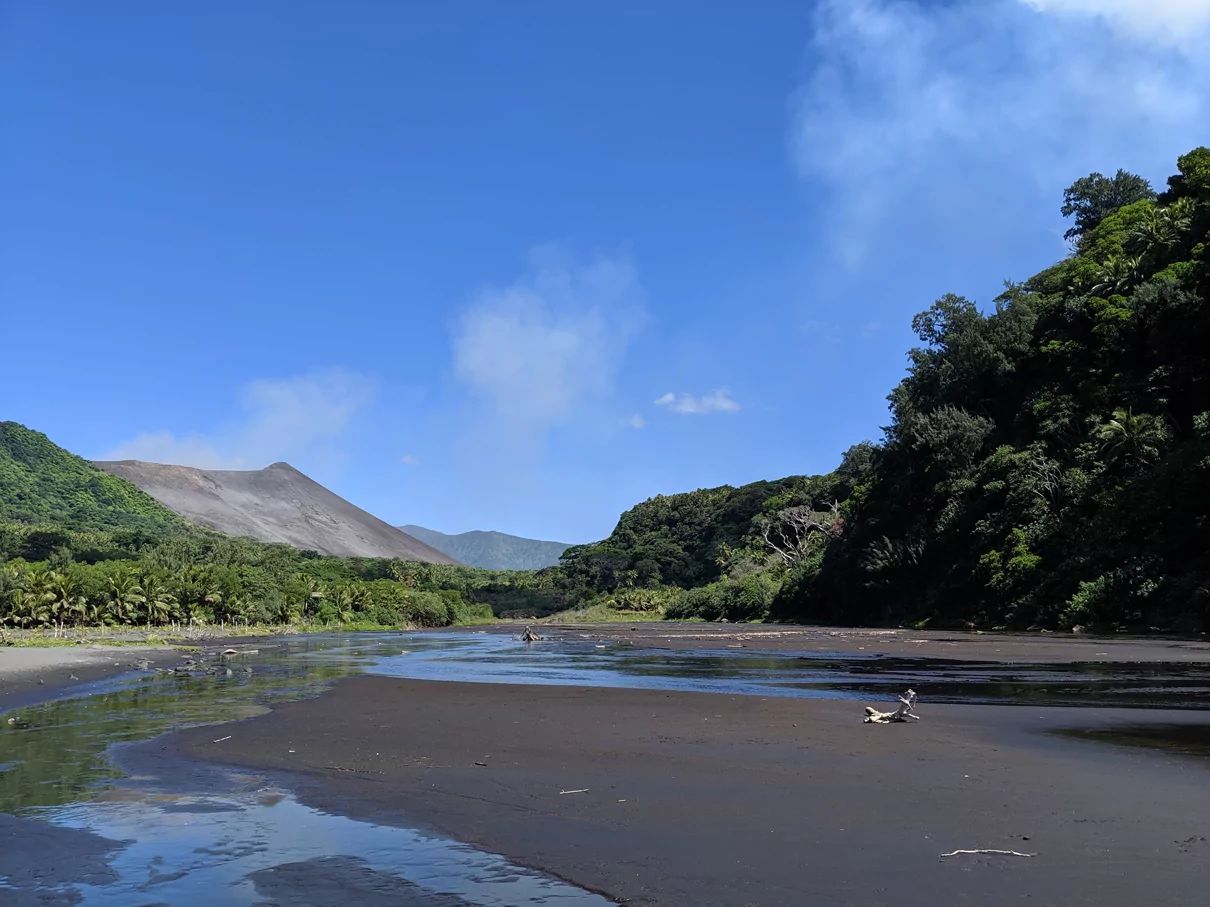
Sulfur Bay with Mt Yasur on the horizon
photography by: Mika - Exploring Paw
I’m Mika, a French expat based in Sydney, Australia.
As a child, I still remember spinning my globe with my eyes closed and then picking with my finger a random place where I would travel later. Since then, I had the opportunity to live and work in many countries before choosing Australia as my home for the last couple of years.
While I work full time in marketing, I’m also an outdoor and travel enthusiast that you’ll most likely find wandering somewhere during weekends. I am a fan of endless hikes, large natural spaces and adventure thrills.
You are more than welcome to get in touch or check out my adventures on Instagram and YouTube.
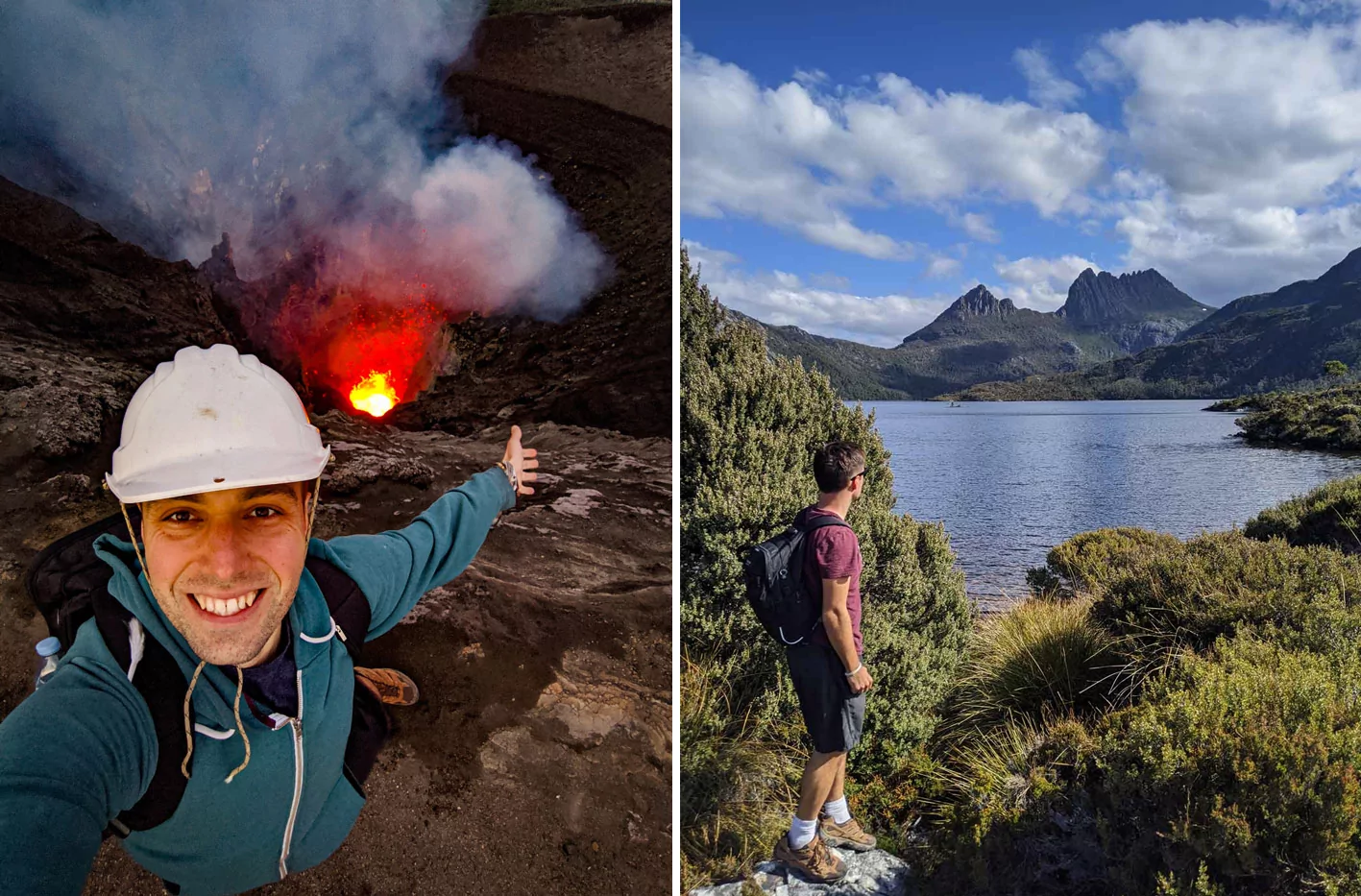
photography by: Mika - Exploring Paw